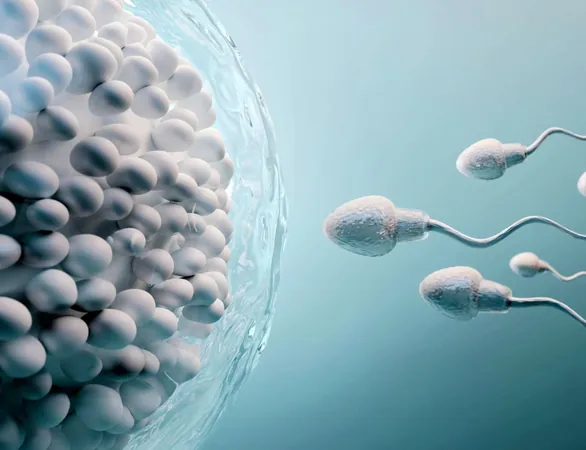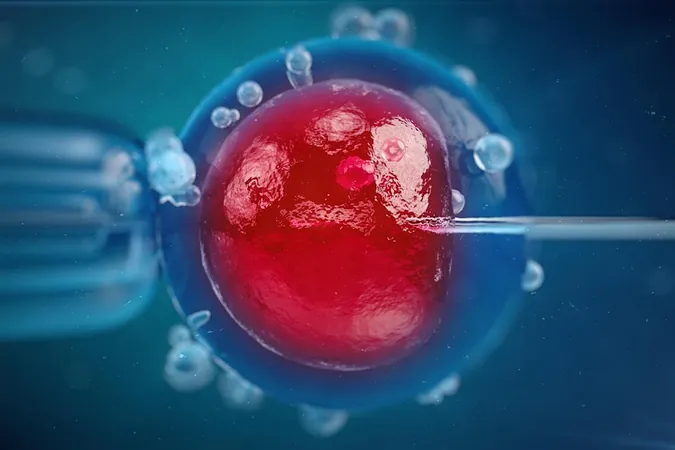
Unlocking Fertility: How a Heat-Sensitive Switch in Sperm Could Revolutionize Contraception
2025-05-06
Author: Kai
A Surprising Discovery in Sperm Behavior
Mammalian sperm are not your average cells; they're quite picky about their environment. They thrive in cooler conditions but face the challenge of navigating the warmer female reproductive tract. New research from Washington University School of Medicine in St. Louis reveals the secret behind their survival and success.
The Heat Switch: How Temperature Ignites Sperm Activity
The key lies in temperature fluctuations. When sperm enter a warmer environment, they undergo a remarkable transformation, shifting from a calm, steady swim to a frenzied, whip-like motion. This crucial change enhances their ability to penetrate the egg for fertilization.
CatSper: The Protein That Powers Sperm Movement
Researchers identified a sperm-surface protein named CatSper, which regulates ion entry and fuels vigorous tail movements. Interestingly, temperatures exceeding 38°C (100.4°F) activate this protein, unlocking a hyperactive state critical for successful fertilization. Polina Lishko, a prominent researcher in cell biology, states, “Our work has pinpointed a temperature-controlled switch in sperm that triggers these vigorous movements exactly when needed for fertilization.”
Evolution’s Smart Design: Why Testicles Are Outside the Body
Ever wondered why testicles hang outside the body? It’s an evolutionary design to keep them cool, keeping sperm inactive until they reach the heated female reproductive tract, allowing them to spring into action at precisely the right moment.
Cool Tricks Across Species
Humans are not alone in this clever cooling mechanism. Dolphins use their dorsal fins to cool blood before it reaches their testes, while elephants utilize their large ears for the same purpose. These adaptations contrast with birds, which lack CatSper and do not rely on temperature for sperm activation.
New Pathways for Contraception and Infertility Solutions
With CatSper being a unique target for drug development, researchers are exploring new methods of contraception. Instead of blocking CatSper, scientists propose activating it prematurely. By doing so, it could effectively drain sperm energy, ensuring that when it's time for fertilization, the sperm are less capable of succeeding.
Understanding Female Fertility: The Aging Ovaries Dilemma
While sperm need heat for activation, female fertility faces different challenges related to aging. A study examining 62 human ovaries sheds light on how different ovarian regions age at varying rates. The review revealed that the ovarian cortex starts showing decline after age 40, impacting the support system necessary for egg development.
Revolutionizing Future Fertility Treatments
This dual perspective on fertility—activation in men and preservation in women—opens avenues for innovative treatments. Targeting premature CatSper activation could lead to effective yet safe birth control options. In women, enhancing pathways like TGF-beta may preserve fertility for longer.
By understanding both the activation and aging processes, new generations of fertility treatments can better support reproduction for both partners.
In Conclusion: A New Era of Fertility Insights
This groundbreaking research published in Nature Communications is set to change the landscape of fertility treatments and contraception forever. Stay tuned, as this could pave the way for transformative solutions in reproductive health.




 Brasil (PT)
Brasil (PT)
 Canada (EN)
Canada (EN)
 Chile (ES)
Chile (ES)
 Česko (CS)
Česko (CS)
 대한민국 (KO)
대한민국 (KO)
 España (ES)
España (ES)
 France (FR)
France (FR)
 Hong Kong (EN)
Hong Kong (EN)
 Italia (IT)
Italia (IT)
 日本 (JA)
日本 (JA)
 Magyarország (HU)
Magyarország (HU)
 Norge (NO)
Norge (NO)
 Polska (PL)
Polska (PL)
 Schweiz (DE)
Schweiz (DE)
 Singapore (EN)
Singapore (EN)
 Sverige (SV)
Sverige (SV)
 Suomi (FI)
Suomi (FI)
 Türkiye (TR)
Türkiye (TR)
 الإمارات العربية المتحدة (AR)
الإمارات العربية المتحدة (AR)